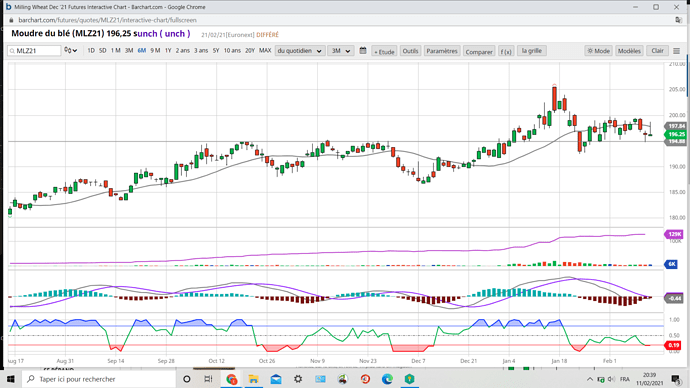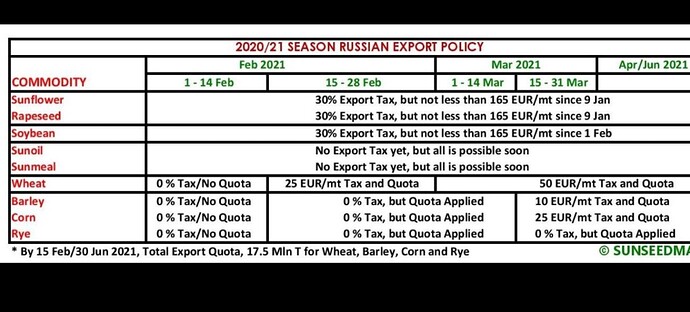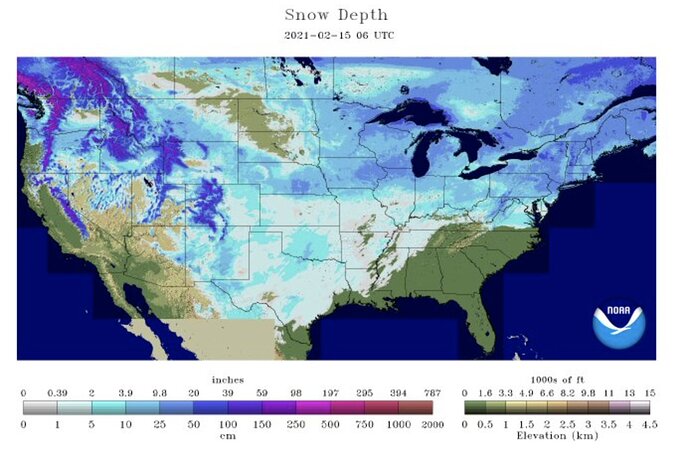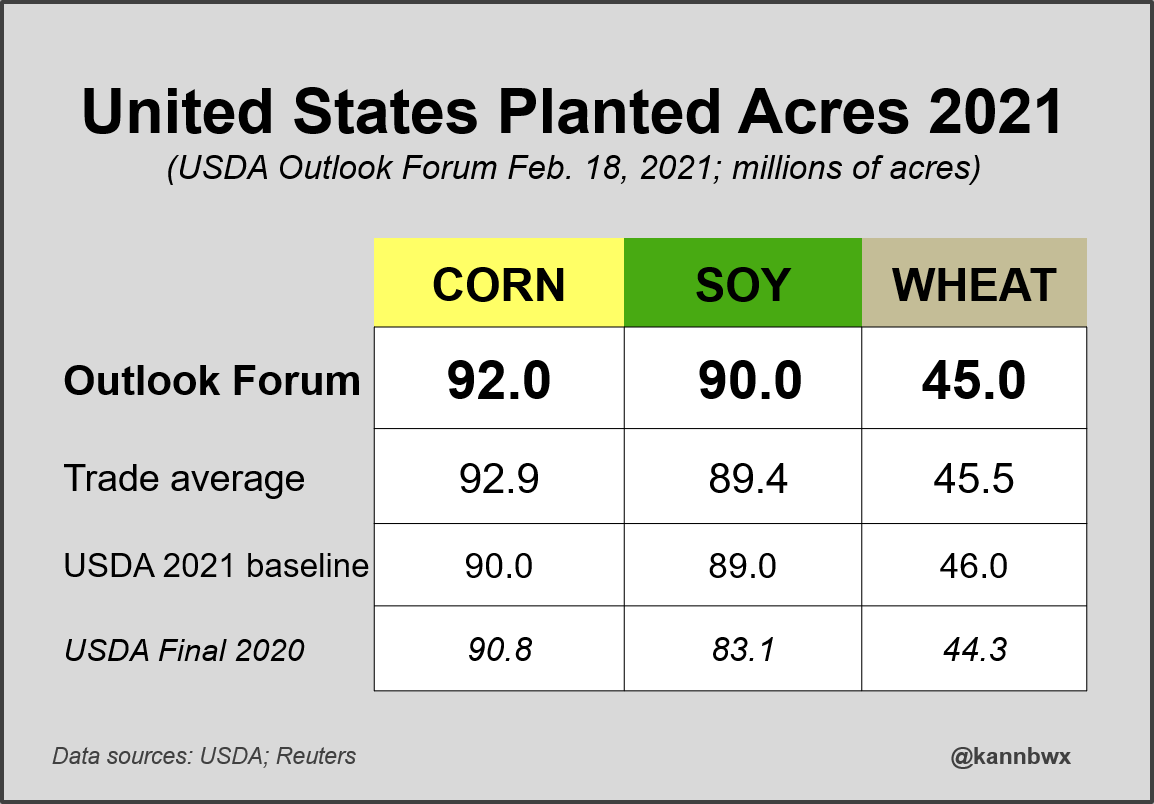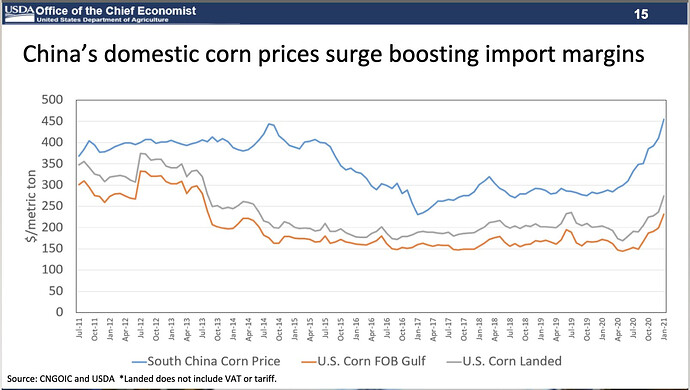La résistance blé 21 195 est bien testé depuis plusieurs semaine .Elle est acquis tant qu’en hebdo elle n’est pas cassée. Depuis plusieurs année les cours ne passaient pas cette résistance avant moisson
Support.
Oui le support 195 est bien acquis .les infos me perturbe…
WASDE-Corn-China-Carry-Wheat-Prices
Analyse et anticipations (Reuters):
Excellente analyse « soja » et perspectives.
Info.
Les 10 principaux débouchés export du blé U.S… Nous ne sommes manifestement pas sur les même marchés :
Je suis pour les fondamentaux en toile de fond. Par contre, on rentre dans une période ( de 1 à 2 mois) où les fondamentaux sont « out » (hors surprise bien sûr : export, amérique du sud) car les jeux sont fait sur l’ancienne et la nouvelle est un peu trop loin pour être prise en compte. Enfin ce n’est que mon avis et cela n’empêche qu’il faut rester attentif
Épaisseur de la couche de neige aux États-Unis :
Les risques de dégâts de gel sur les blés d’hiver sont plutôt faibles mais existent, sur certaines zones de l’Oklahoma, un petit peu Texas, Montana aussi. Le Kansas n’a qu’une petite couche, mais sera-t-elle suffisante? Pas facile de savoir pour l’instant.
Pour vous donner une idée de l’ampleur de la vague de froid outre atlantique en ce moment :
On est en degrés fahrenheit dans le Nebraska et en dernier dans l’ Iowa qui est un peu plus au nord. - 5 F équivaut a du - 20 Celsius .
Evolution des imports/exports en blé de l’ex URSS et de la Fédération de Russie depuis 1991 :
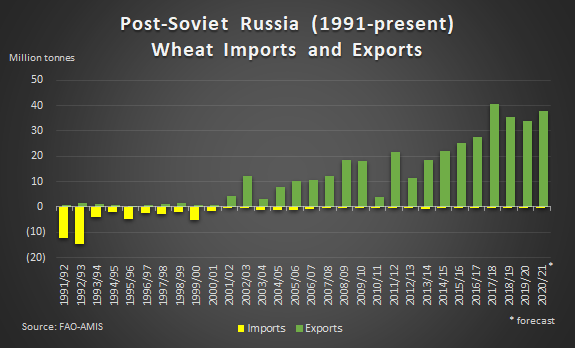
Evolution des imports/exports en maïs, orge et sorgho de la Chine. Exportateur net jusqu’en 2007/2008, la grande inconnue aujourd’hui est la direction et l’ampleur du déficit dans les années à venir. Les avis sont très partagés sur ce sujet.
texte en gras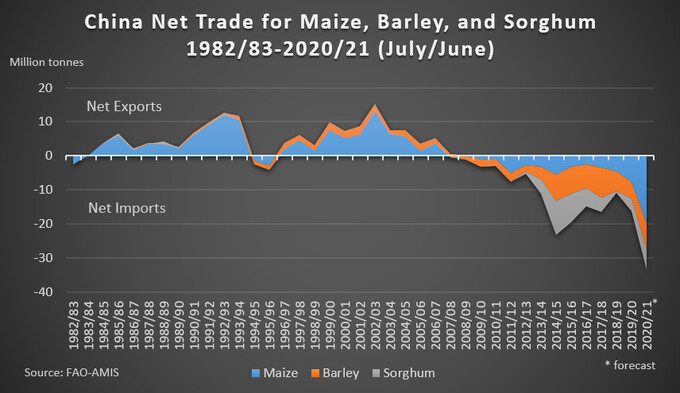
Article assez complet sur les grains (actuellement)
Premier paragraphe sur les très probables dégâts du gel aux États-Unis.
16 Feb, 2021
Grains highlights
Given the severe and prolonged frosts in the United States and the lack of sufficient snow cover, 10% of the soft winter wheat crop and up to 15% of hard winter wheat crop in the US Wheat Belt are expected to be severely damaged.
-
In 2020, the area planted with winter wheat in the United States was 6.714 million hectares, which is 4.8% more than the previous year. 1.08 million hectares were sown with barley (+3.2%) and 1.012 million hectares with winter rapeseed (-21.9%).
-
According to AgRural estimates, 9% of the soybean areas were harvested in Brazil as of 12.02.2021 compared to 3.8% a week earlier and 16% a year earlier.
-
According to the forecast of the Russian Grain Union, grain exports from Russia will be well below the quota of 17.5 million tons for the period until 01.07.2021, including:
wheat- 10 million tons
barley- 2 million tons
corn- 2.5 million tons
- As of the end of Jan 2021, sunseed stocks held by farming organizations of Russia were 1.248 million tons, which is 34% less than in 2020.
- In the week of Feb 8-14, 195,600 tons of soft wheat were exported from the EU compared to 405,200 tons a week earlier. 105,600 tons of wheat were exported from Poland and 68,200 tons from Latvia. Over the period of 1.07.2020 -14.02.2021, total wheat exports from the EU reached 16.24 million tons, including:
16.24 million tons for Algeria
1.67 million tons for Saudi Arabia
1.63 million tons for China
1.33 million tons for Nigeria
1.02 million tons for Morocco
-
From the beginning of the season until now, 9.17 million tons of soybeans have been imported into the EU (+4% compared to the previous season), 4.3 million tons of rapeseed (-2%), 702,900 tons of sunflower (+8%). Soybeans were imported from the United States (4.43 million tons), Brazil (2.87 million tons), Canada (1.35 million tons) and Ukraine (232,500 tons). Rapeseed was delivered from Ukraine (2.2 million tons) and Canada (1.35 million tons), and sunflower from Russia (274,200 tons), Moldova (166,400 tons) and Ukraine (120,400 tons). The largest importer of soybeans and rapeseed is the Netherlands with 2.6 million tons and 1.1 million tons, respectively. As for sunseed, the biggest importer is Bulgaria with 392,900 tons.
-
Strategie Grains has raised its forecast for soft wheat exports from the EU and the UK in 2020/21 by 1 million tons to 26.1 million tons. Exports of barley increased by 0.4 million tons to 7.5 million tons.
-
ABARES has raised its estimate for the wheat production in Australia to 33.34 million tons, which is a new record for the country. The previous best achievement was 31.8 million tons achieved in 2016/17. The barley production is 13.1 million tons - also a new record compared to the old 13.4 million tons from 2016/17.
Je me permets de souligner qu’il faut souvent comprendre un minimum d’anglais pour de très nombreux articles. C’est facile d’apprendre si besoin grâce à internet et par exemple le dictionnaire wordreference.com.
On cherche (apprend) un mot puis un autre… Beaucoup de mots en rapport nos marchés reviennent très souvent:
Wheat, corn, barley, forecast, output, harvest, area, etc.
On apprend très vite.
Traduction rapide du premier paragraphe de mon dernier post:
Given (considérant) the severe and prolonged frosts (gelées) in the United States and the lack (manque) of sufficient snow cover (couverture neigeuse), 10% of the soft winter wheat crop and up to 15% of hard winter wheat crop in the US Wheat Belt are expected to be severely damaged.
Sinon on peut facilement traduire un article avec le navigateur chrome avec un clic droit. La traduction nest pas parfait mais cela permet de comprendre le sens.
En bleu , le prix en $ de la tonne de maïs en Chine.
En gris le prix en $ de la tonne de maïs U.S. livrée en Chine.
Les U.S. sont apparemment très concurrentiel.
Bloomberg : le canola canadien s’envole:
Aux États-Unis, la vague de froid est catastrophique
Les températures de la carte sont en °Farenheit, -20°F = -29°C et bien des températures sont inférieures et des régions n’ont pas de neige protectrice comme le Kansas, premier Etat producteur de blé.
